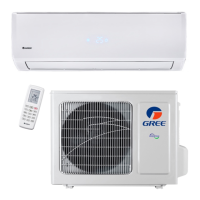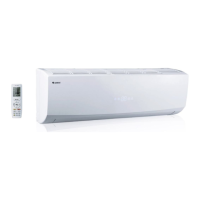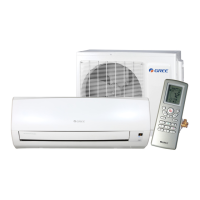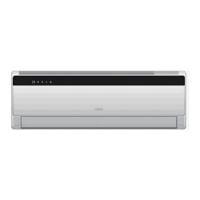33
33
Check after installation
Check after installation
• Check according to following after finishing installation.
Items to be checked Possible malfunction
1. Preparation of test operation
• The client approves the air conditioner.
• Specify the important notes for air conditioner to the client.
2. Method of test operation
• Put through the power, press ON/OFF button on the remote controller to start
operation.
• Press MODE button to select AUTO, COOL, DRY, FAN and HEAT to check
whether the operation is normal or not.
• If the ambient temperature is lower than 16°C , the air conditioner can't
start cooling.
Has the unit been installed solidly?
Have you done the refrigerant leakage
test?
Is heat insulation of pipeline sufficient?
Is water drained well?
Is the voltage of power supply
according to the voltage marked on the
nameplate?
Is electric wiring and pipeline installed
correctly?
Is the unit grounded securely?
Does the power wire follow the
specification?
Is th
ere any obstruction in the air inlet
and outlet?
The dust and sundries caused during
installation are removed?
The gas valve and liquid valve of
connection pipe are open completely?
It may cause insufficient cooling
(heating) capacity.
It may cause malfunction or damaging
the parts.
It may cause insufficient cooling
(heating) capacity.
It may cause malfunction or damaging
the parts.
It may cause electric leakage.
It may cause malfunction or damaging
the parts.
It may cause malfunction or damaging
the parts.
It may cause condensation and water
dripping.
It may cause condensation and water
dripping.
It may cause insufficient cooling
(heating) capacity.
The unit may drop, shake or emit noise.
Vérification après l'installation
À vérifier après l'installation
• Faites les vérifications suivantes après avoir complété l'installation.
Points à vérifier Défectuosités possibles
L'appareil a-t'il été solidement installé ?
Avez-vous vérifié s'il n'y a pas de fuite ?
Les tuyaux de l'appareil sont-ils bien
isolés ?
L'eau est-elle drainée correctement ?
La tension correspond-elle à la tension
nominale qui figure sur la plaque signalétique?
Les fils électriques et les tuyaux sont-ils
raccordés correctement ?
L'appareil a-t-il été mis à la terre
correctement ?
Le cordon d’alimentation est-il conforme
aux normes spécifées ?
Est-ce que l'entrée ou la sortie d'air sont
obstruées ?
L'appareil a-t-il été nettoyé et débarrassé de la
poussière et des détritus faits durant l'installation ?
Les valves sont-elles complètement ouvertes?
1. Avant le test de fonctionnement
• Vérifier si le client est satisfait.
• Informez le client sur les points importants de l'appareil.
2. Faire le test de fonctionnement
• Mettre le courant électrique et appuyez sur la touche 'ON/OFF' de la
télécommande pour démarrer l'appareil.
• Appuyez sur la touche 'MODE' pour choisir AUTO, COOL, DRY, FAN et HEAT
et ainsi vérifier si l'appareil fonctionne normalement ou non.
• Si la température ambiante est en bas de 16°C, le climatiseur ne fonctionnera pas.
Cela peut affecter le rendement de
l'appareil (en climatisation ou chauffage).
Cela peut causer un mauvais fonction-
nement ou endommager les pièces.
Cela peut affecter le rendement de la
climatisation ou du chauffage.
Cela peut causer un mauvais fonction-
nement ou endommager des pièces.
Cela peut entraîner une dispersion
électrique.
Cela peut causer un mauvais fonction-
nement ou endommager les pièces.
Cela peut causer un mauvais fonction-
nement ou endommager les pièces.
Cela peut faire de la condensation ou
l'appareil peut dégoutter.
Cela peut faire de la condensation ou
l'appareil peut dégoutter.
Une fuite risque d'affecter le rendement
de la climatisation ou du chauffage.
L'appareil peut tomber, vibrer ou être bruyant.
00708_Owner's manual Lomo_Mise en page 1 15-03-03 14:51 Page38
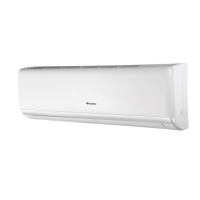
